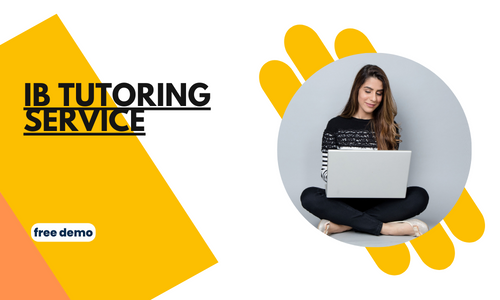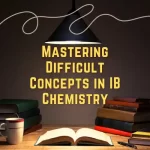Discover IB BM Paper 1
Study tips are important for BM Paper 1 as it is an analytical paper than a theoretical one- aimed to test your understanding in depth and length across all the topics covered in the syllabus-with a realistic application of the constructed concepts in your daily lives. That’s why this Paper tests you on case studies, instead of just mugged up theoretical definitions.
How to prepare for IB BM Paper 1?
Ideally, there is no one-fit for all strategies. IB BM PAPER 1 case study requires detailing and dissection from the IB BM unit-wise syllabus. The IB examiner, IB instructor who is teaching students must be experienced enough to imagine questions keeping in mind the IB command terms. It is advisable that students look for experienced IB BM Tutors who understand the requirement of IBDP BM Paper 1. It is important to prepare a timeline, definition of keywords, business tools, and theories that best explain and analyze the IB BM Paper 1 case study.
IB BM SL Paper 1 versus IB BM HL Paper 1?
They are different with reference to exam time, weightage, and a number of sections. However, the IB BM P1 pre-seen case study of Section A in both is the same for SL and HL students, different questions can be expected for each level. You get to receive the additional stimulus material on the exam day, which keeps you informed on the contextual setting of the case study and its decision-making. Section B and section C (HL only) questions of IB BM paper 1 are primarily based on the additional stimulus material. However, the application of such stimulus is relevant to the pre-seen case studies. The additional stimulus material may be exactly the same, or part similar to or different for SL and HL students. Moreover, there can be some additional stimulus material for HL students only.
Weightage change for IB BM PAPER 1 May 2021 IBDP exam?
SL Paper 1 has been amended in which students have to answer only one question. HL Paper 1 has been amended with the removal of Section C.
Know IB BM SL Paper 1
Paper 1 comprises 30% weightage.
The time duration of Paper 1 is 1 hour and 15 minutes.
Paper 1 is based on assessment objectives 1, 2,3, and 4 (AO1-4) of 40 marks.
Paper 1 SL has two Sections-Section A and Section B. The Paper is based on a pre-seen case study in Section A and unseen additional unseen material for section B. Section A covers units 1-5. You have to answer two out of three structured questions based on the pre-issued case study, each of 10 marks. Section B has a syllabus coverage of units 1-5. You are to answer one compulsory structured question assessed out of 20 marks. The particular question is primarily based on the additional stimulus material.
According to May 2021 programme guide IB BM SL Paper 1 has been amended in which you have to answer only one question.
Discover IB BM HL Paper 1
Paper 1 comprises 35% weightage.
It is 2 hours and 15 minutes’ paper.
Paper 1 HL is assessed out of four objectives (AO1-4) making a total score of 60 marks.
It has three Sections-A, B, and C. Section A covers Units 1–5 including HL extension topics. You are required to answer two of three structured questions based on the pre-seen case study (10 marks per question). Section B’s coverage is Units 1–5 including HL extension topics. You need to answer one compulsory structured question primarily based on the additional stimulus material. (20 marks) Section C is based on concepts from Units 1–5 including HL extension topics. You need to answer one compulsory extended response question primarily based on the additional stimulus material. (20 marks)
According to May 2021 programme guide IB BM HL Paper 1 has been amended with the removal of Section C.
What to expect in IB BM PAPER 1 pre-released case study?
Based on the pre-seen case study topic published by the IB three months prior to the exam session, Paper 1 demands to test your art of critical thinking, analytical, evaluative, logical reasoning, problem-solving and reflective skills with a strong power of rational decision-making. The pre-issued case study determines how effectively you can manage and handle data based questions, draw inference, and apply the information in resolving real-life problems.
IB BM command terms and assessment criteria
Command terms are powerful tools used to answer the exam questions as per the requirements. They are categorized under learning outcomes denoted by levels- from lower to higher order thinking skills. [Level1-lowest, Level 4-highest order thinking skill]
| Level 1: Knowledge and understanding [1-2 marks] | |
| Command terms | What they are |
| Define | Precise meaning of a word, phrase, concept or physical quantity |
| Describe | A comprehensive detailing of a situation, event, pattern or process |
| Outline | A brief summary |
| State | Specifying name, value or other brief answer without explanation or calculation |
| Level 2: Application and analysis [3-6 marks] | |
| Analyse | Segmentation of essential elements and structure, identification of relations |
| Apply | Use knowledge and understanding in a real-life problem |
| Comment | Inferencing on a statement or a calculation |
| Demonstrate | Evincing through illustrative examples |
| Distinguish | Differentiate between key concepts |
| Explain | Detailing on the causes |
| Interpret | Recognizing trends and drawing conclusions from given information |
| Suggest | Framing a hypothesis or giving a solution |
| Level 3: Synthesis and evaluation [8-20 marks] | |
| Compare | Accounting the similarities between two or more referenced items or situations |
| Contrast | Differentiating between two or more referenced items or situations |
| Compare and contrast | Accounting the similarities and differences between two or more referenced items or situations |
| Discuss | Striking a balance between claims, counterclaims, factors, and hypotheses; drawing a conclusion based on factual evidences |
| Evaluate | Assessing the implications and limitations about the ideas, works, solutions or methods in relation to selected criteria |
| Examine | Considering an argument or concept emanating from the assumptions and interrelationships of an issue |
| Justify | Substantiating a conclusion with logical reasoning |
| Recommend | With reference to a given situation, problem or issue validating a course of actions |
| To what extent | Conclusions drawn based on factual evidence |
| Level 4: Appropriate skills [1-6 marks] | |
| Annotate | Adding brief notes to a diagram or graph |
| Calculate | Showing steps to arrive a numerical answer |
| Complete | Adding of missing data |
| Construct | Diagrammatic or logical interpretation of data |
| Determine | Arriving at a feasible answer |
| Draw | Joining the scattered points with labelling |
| Identify | Arriving at a feasible solution from a choice of possibilities |
| Label | Labelling a graph |
| Plot | Plotting the scatter diagram |
| Prepare | Plotting data points based on stimulus |
What can make your answer reach the highest mark band?
Learn to use the BM-specific key terms, command terms, and examples. Based on a given stimulus illustrate your answers with examples. You must demonstrate how well you have understood the tools, techniques, and theories. Use the given stimulus well to validate your question and not merely stating the information. Based on the nature of the question, check if your answer requires a dual approach as most students only write one-sided answers for an evaluative question.
What is the type of calculator to be used?
You can practically answer all the questions using a four-function (plus, minus, multiply, divide) calculator. However, you are permitted to use graphic display calculators (GDCs) during the examination.
Assessment objectives of IB BM HL & SL Paper 1
| SL | HL | ||
| Section | Assessment objectives | Section | Assessment objectives |
| A | Demonstrate knowledge and understanding Demonstrate application and analysis Demonstrate a variety of appropriate skills | A | Demonstrate knowledge and understanding Demonstrate application and analysis Demonstrate a variety of appropriate skills |
| B | Demonstrate knowledge and understanding, Demonstrate application and analysis, Demonstrate synthesis and evaluation, Demonstrate a variety of appropriate skills | B | Demonstrate knowledge and understanding, Demonstrate application and analysis, Demonstrate synthesis and evaluation, Demonstrate a variety of appropriate skills |
| C | Demonstrate knowledge and understanding, Demonstrate application and analysis, Demonstrate synthesis and evaluation, Demonstrate a variety of appropriate skills |
How to score 7 in IB BM HL & SL paper 1?
| SL | HL | ||||||||
| Sections | Highest mark band | Level descriptor | Sections | Highest mark band | Level descriptor | ||||
| A | 5-6 | Analyse relevant issues with the optimal use of tools and techniquesUse the key and command termsUse your stimulus effectively | A | 5-6 | Analyse relevant issues with the optimal use of tools and techniquesUse the key and command termsUse your stimulus effectively | ||||
| B | 9-10 | Understand the implication of the questionUse the relevant BM tools, key, and command termsUse evidences throughout to back up the claims and counter claimsUse your stimulus optimally | B | 9-10 | Understand the implication of the questionUse the relevant BM tools, key, and command termsUse evidences throughout to back up the claims and counter claimsUse your stimulus optimally | ||||
| C | |||||||||
| Criterion | Description of the criterion | Highest mark | Level descriptor | ||||||
| Criterion A | Knowledge and understanding of tools, techniques and theories | 4 | Demonstrate a good understanding of tools, techniques, and theories. | ||||||
| Criterion B | Application | 4 | Demonstrate a good understanding of tools, techniques, and theories with examples and illustrations. | ||||||
| Criterion C | Reasoned arguments | 4 | Strike a balance between relevant claims and counter claims. | ||||||
| Criterion D | Structure | Organize the structural elements and ideas. | |||||||
| Criterion E | Individuals and societies | Strike a balance between individual and group perspectives. | |||||||
Common mistakes or confusion to avoid in IB BM HL & SL Paper 1
Just a theoretical explanation for a quantitative question is not sufficient. Use the quantitative tools to substantiate your data. Remember that you have a qualitative section in Section A on every unit, except Finance. It is Finance, Sales forecasting, Decision Trees in HL (Section B) which call for a thorough quantitative analysis. The break-even analysis, profitability and liquidity analysis, costs and revenue calculations, and efficiency analysis ratio, sales forecasting require mathematical concepts –just to name a few as moving averages, trends, seasonal and cyclical fluctuations, extrapolation, mean, and variations.
Sometimes you ignore the key terms and replace them with similar meanings. Don’t do that! Be adept with the key terms-like Public company, Multinational, CSR, Business Ethics, Stakeholders, Internal and External Growth, Labour Turnover, outsourcing, Centralisation and Decentralisation, Autocratic, Motivation, Power Culture, Gross profit margin, Operating profit margin, Current ratio, Acid-test ratio, Stock turnover ratio (HL), Creditor days ratio (HL), Market share, marketing mix, USP, Franchising, E-commerce, Labour Productivity, Customized production, Lean production, Just-in-time, Outsourcing.
Often students dilute the command term justify’ by not weighing the arguments in a balanced manner.
Sometimes you may get confused with additional command terms, esp. for constructed questions. Remember strong command terms like support/refute, agree/disagree are just to explain the extreme outlook for different schools of thought.
Don’t get intrigued by variants of the command terms like Assess the relative importance, What trends, Draw on your knowledge, Hypothesize, Integrate, Review, Criticize.
Instead of writing prepared answers, try to contextually connect your answer with the relevant case study.
Sometimes students try to connect the motivation factor with the leadership skills in a very feeble and superficial manner. To nail the excellent grade point you should be able to explore how motivation can be achieved better for a reasonably larger group of unskilled labour force involved in repetitive jobs.
Never ignore to highlight on the employee relation adopted by the employer with an element of precision than in a generic manner. Good and precise answers connect collective
bargaining, arbitration, negotiations with unions and more extreme methods such as lock-outs.
Always remember to connect the concept of resistance to change with examples-like the reasons for entering the US market. Often you get to miss out linking the contextual issue into the concept of resistance to change.
Remember that the strengths and weaknesses of the SWOT analysis are very different from the opportunities and their threats.
Do not forget that the relevant tools like decision trees, Ansoff, the Boston Matrix, SWOT and occasionally force field analysis can be well complemented with the relevant ideas such as motivation, marketing, risk, management of change, sources of finance. While it is true to connect the tools and ideas based on their relevance, it is equally important for you to remember not to randomly use as many tools you feel like.
While these are a few amongst the common errors noticeable, it is equally exciting to realise that there is a scope of scoring a perfect 7 even with accommodating a provisional room for 30% error. This statistic portrays a healthy picture that anytime the exam can be aced with the guided supervision of online classroom, courses, crash course, and revision pack.







